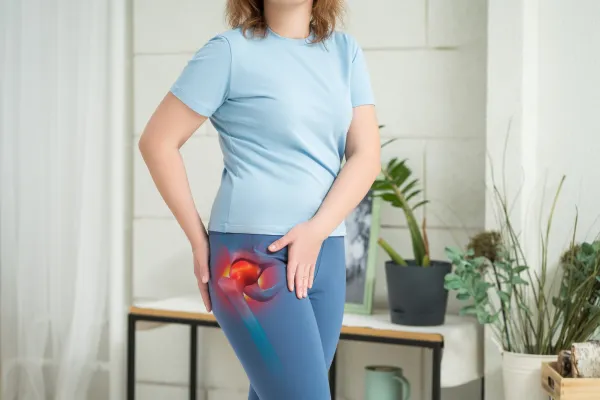
Why Does My Hip Hurt When I Walk? Common Causes and What You Can Do
Why Does My Hip Hurt When I Walk?
Common Causes and What You Can Do
You’re out for a walk—maybe with the dog, down at the beach, or just around the shops—and then it hits. That ache, pinch, or stiffness in your hip that makes every step a little less enjoyable.
If you’ve been asking yourself, “Why does my hip hurt when I walk?” you’re definitely not alone. Hip pain is a common issue, especially as we get older, but here’s the good news: in many cases, it can be managed or even fixed with the right support.
Let’s take a look at what might be going on, and how physiotherapy can help you get back to walking comfortably again.
First, Where Is the Pain?
Your hip joint is a deep ball-and-socket joint, surrounded by muscles, tendons, and connective tissues. When we say “hip pain,” it can show up in a few places:
At the front of the hip or groin
Along the side of the hip
In the buttock
Or even down into the thigh or knee
Different locations often point to different issues. That’s why a proper assessment is so important.
Common Causes of Hip Pain While Walking
Here are some of the most common reasons people feel hip pain when they’re out and about:
1. Hip Osteoarthritis
This is one of the most common culprits, especially in adults over 50. Over time, the cartilage in the hip joint wears down, causing stiffness, swelling, and that familiar grinding or aching feeling.
What it feels like:
Stiffness in the morning
Pain after walking or standing for a while
Limited range of motion
2. Bursitis
Around your hip are small fluid-filled sacs called bursae. These help cushion the joint—but if they get irritated, they can cause sharp, aching pain, especially along the outer side of the hip.
What it feels like:
Tender to touch
Pain when lying on your side
Pain that flares after walking or climbing stairs
3. Tendon Strain or Tendinopathy
The muscles that support the hip—like the glutes or hip flexors—can become overworked or irritated. This is especially common in people who’ve recently increased their walking or activity levels.
What it feels like:
A pulling or pinching feeling
Pain that builds with movement
Soreness that lingers after activity
4. Lower Back Referrals
Sometimes, the pain isn’t coming from your hip at all! Nerves in the lower back can refer pain down into the hip, buttock, or thigh.
What it feels like:
A deep, hard-to-pinpoint ache
Pain that changes with posture
Possible tingling or numbness
5. Muscle Weakness and Imbalance
When the muscles around the hip aren’t strong enough—or one side works harder than the other—your walking pattern can change. Over time, this creates extra strain on the hip joint and surrounding tissues.
What it feels like:
A gradual build-up of pain
Discomfort on one side more than the other
Feeling unsteady or off-balance
What You Can Do About It
The good news? Most hip pain can be managed without surgery.
Here’s how we help at Forster Tuncurry Physiotherapy:
✅ Step 1: A Proper Assessment
We’ll look at:
How you walk and move
Where exactly the pain is
Muscle strength, joint mobility, and any imbalances
This helps us get to the real cause of the problem—not just treat the symptoms.
✅ Step 2: Hands-On Treatment
We use gentle techniques to:
Ease tight muscles
Improve joint movement
Reduce inflammation and stiffness
This often provides relief quite quickly, especially when paired with movement.
✅ Step 3: Tailored Exercises
We’ll guide you through simple, safe exercises that:
Strengthen your hip muscles
Improve balance and posture
Build support around the joint
No gym gear needed—just consistent movement that fits into your daily life.
✅ Step 4: Movement Advice
We’ll also show you:
How to walk more comfortably
When to rest (and when not to)
Small changes you can make at home to take pressure off your hips
Sometimes just adjusting your stride or switching to better shoes can make a huge difference.
Final Thought
If your hip hurts when you walk, don’t just put up with it or slow down your lifestyle.
Your body’s trying to tell you something—and physio can help you listen, understand, and get back on track.
Whether your pain is new or something you’ve had for years, we’re here to help you move better, feel better, and enjoy walking again—without that nagging ache.



